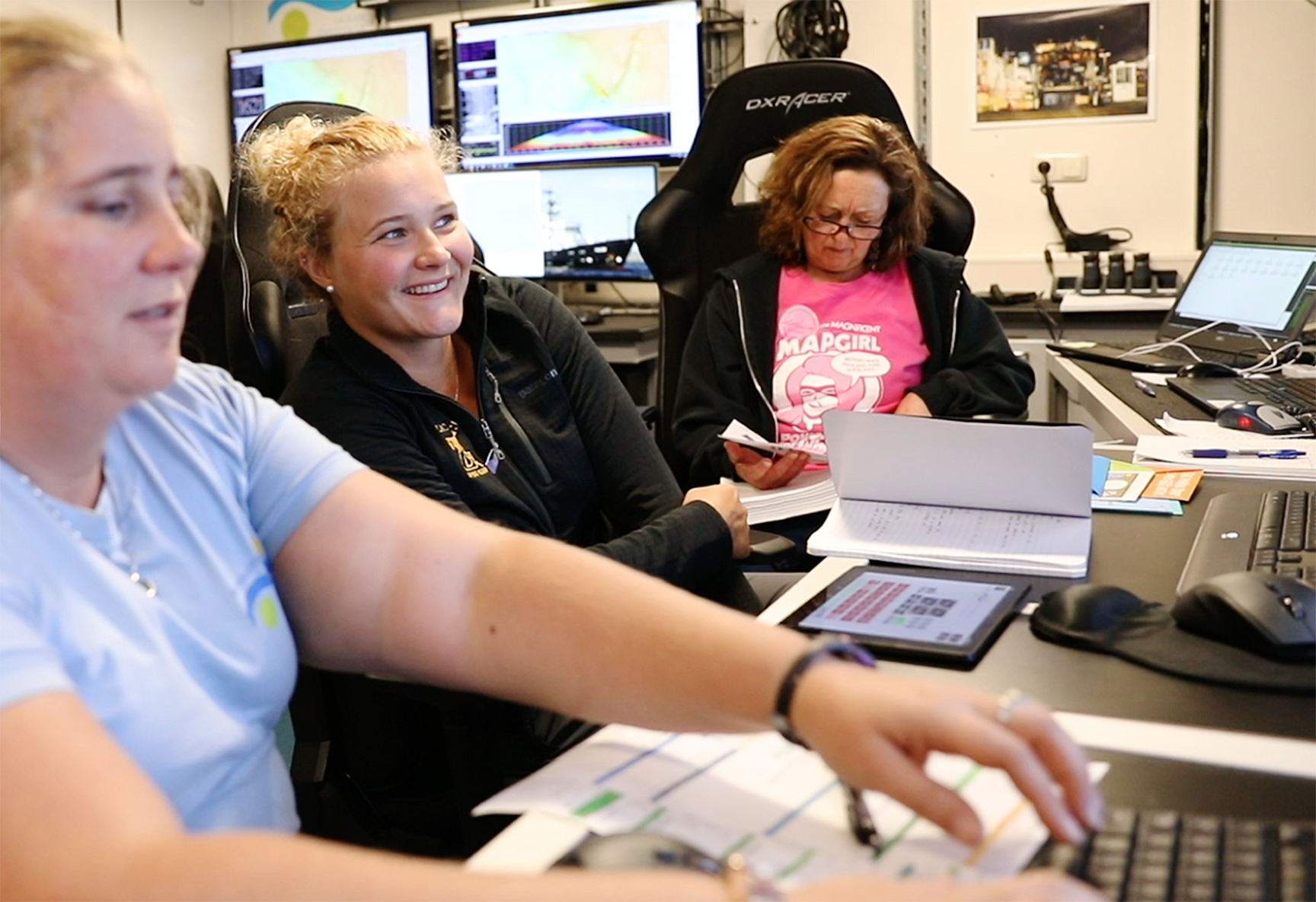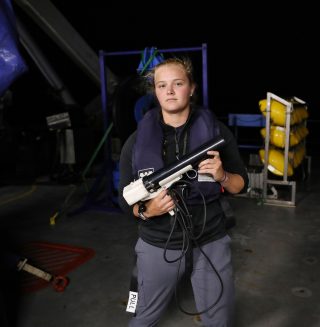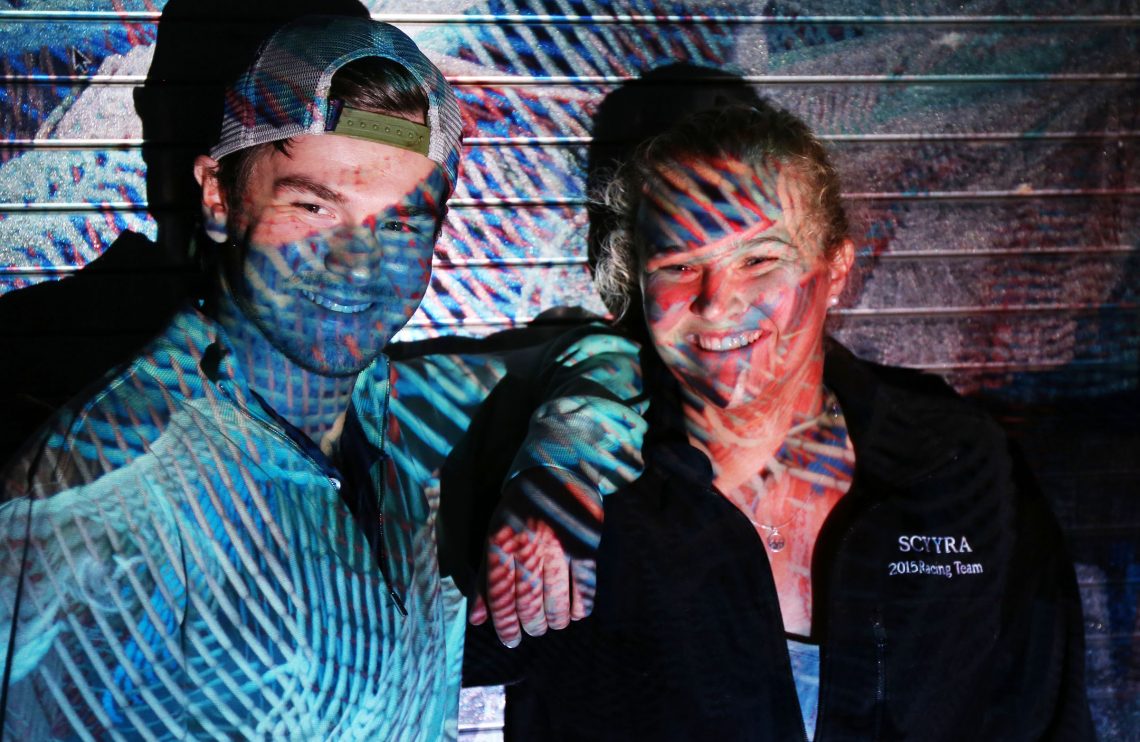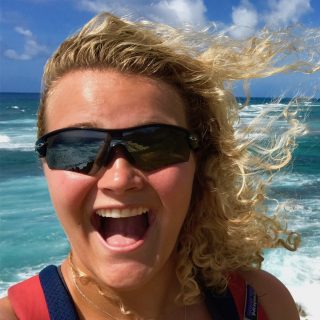As my last watch comes to an end, so does my last night at sea. Being aboard the R/V Falkor is a magical experience. I have learned so much over these past few days. Sitting in the control room in front of a wall of 18 screens all flashing different video streams, navigational information, varying data, graphs, and satellite information was quite overwhelming at first. After spending hours in the control room both on and off watch, I have grown quite comfortable with the systems.

Our Chief Scientist Susan Merle and Deb Smith, one of the marine technicians aboard, have been teaching me about the onboard systems of Sonars, GIS, multibeam mapping, and the processes of obtaining and cleaning multibeam data. As we sailed north to Astoria, I found myself glued to the various screens, mesmerized by a rainbow path. Watching the depth vary from 700m to 1500m in a matter of minutes (even seconds) is amazing. Monitoring the data flow—a mapping process that revealed hidden features and sea mounts to a 2000m deep canyon in real time—was thrilling. Surrounded by so many talented artists, I was encouraged to take a step back from data collection and its purely technological representations and discovered a beauty of perspective I had never known. Beauty can be found in nature, science, and data, and that manner of capturing that beauty is unlimited.

Experimenting and Learning
While I spent the majority of my time learning in the control room, the artists worked their magic! I am amazed by the art they produced in such a short time. From painting water column data colors to a mural of ghost fish to three dimensional moldings of the ocean floor, these talented artists conveyed in a multitude of media their appreciation for the value of scientific research. The artists were welcoming and allowed us to experiment with their media. I tried my hand at mixing resin and paint to create waves. By experimenting and learning from these artists, I gained new appreciation for the research I have done in the past and was inspired to incorporate art as a means to communicate the impact of research.
Thank you Schmidt Ocean Institute for bringing students and artists together and allowing me the opportunity to participate. This was an experience I will forever cherish. I intend to broaden the research and artistic partnerships and friendships I formed aboard R/V Falkor and look forward to advancing the collaboration of art and science. I also look forward to returning one day to the R/V Falkor, as the ship has become a part of my life.


